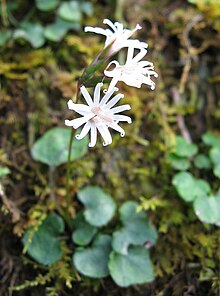
Catamixis is a genus assigned to the daisy family, with only one known species, Catamixis baccharoides, a low to medium height, ¾—1¾ m, shrub. It is native to a very small area of western Nepal and northern India in the Himalayas. It has approximately spoon-shaped, leathery leaves with distanced rounded teeth alternately set along straight, shyly branching stems, and carries many flower heads of about 1 cm, with a few creamy white florets, sometimes with a hint of violet, in corymbs at the end of the branches. Flowers and fruits can be found between March and May. Its vernacular name in Hindi is विषपत्री (vishpatri) or विश्पत्र (vishpatra).

Gymnarrhenoideae is a subfamily with in the daisy family, with only one tribe, the Gymnarrheneae. Two very different species have been assigned to it, Gymnarrhena micrantha, a winter annual from the deserts of North-Africa and the Middle-East, and Cavea tanguensis, a perennial herb that grows on scree near streams and glaciers in the Eastern Himalayas. These species have very little in common, other than having two types of flower heads and sharing a tendency towards dioecism. Both also have basal leaf rosettes, stretched leaves, with few spaced teeth on the margin, and both lack spines and latex.


